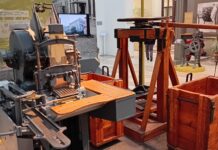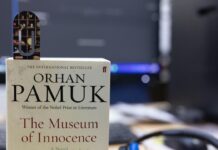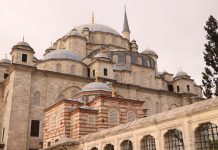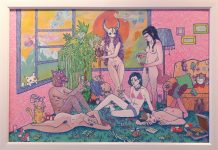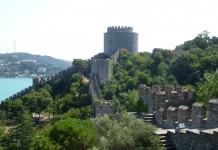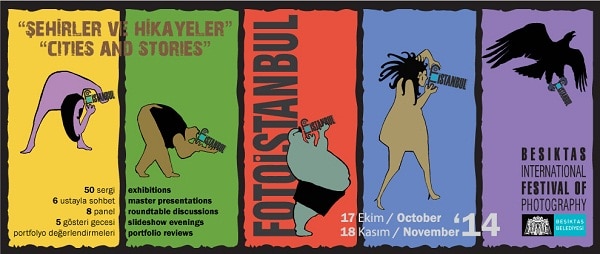
Istanbul is a city brimming with creative people and galleries heralding their work, showing off its art and photography collection inside white walls.
Now, the art is on the streets.
FotoIstanbul is the open-air exhibit of the Beşiktaş International Festival of Photography, a new venture that brings highly regarded photographers to Istanbul, and their photographs to the people. Spread out through shipping containers and open-plan freestanding walls in and around Beşiktaş Square, as well as inside an abandoned orphanage in Ortaköy, the format of the festival is nearly as interesting as the content itself. The layout in Beşiktaş invites stumbling upon and wandering in; for the most part, one rarely feels closed in by the exhibit. Instead, it’s most emphatically OPEN. This is art for the people.
FotoIstanbul shows mostly documentary-style and journalistic photography from living artists; while a large portion are Turkish, many are international. The pictures move between Egypt and Russia, Turkey and the USA, England and Japan—it’s a transporting experience. It’s easy to slip between these worlds, and then slip out again into the bustle of Besiktas, and then back into a photographer’s vision.
There is work from a living legend, William Klein, whose street photography manages to be both powerful and cheeky simultaneously. (Coincidentally, his portion of the exhibit was the first I saw. How appropriate: the master paving the way for the brilliant work that followed. ) And on the other end of the spectrum, there is work from Tiny Collective, a group of talented mobile photographers who I’ve followed on Instagram for ages. Both gave weird thrills of recognition: William Klein’s classic images that ping my memories, and the images I see on Instagram blown-up and mounted on the walls of a shipping container. I like that the festival’s definition of serious photography spans from 35mm film through iPhones—that’s as it should be.
I enjoyed Guy Martin’s project City of Dreams, which juxtaposes images from Turkish soap operas with the real-life drama of the Gezi Park protests. I read about this project last year, so it was exciting to see it up-close. Tugba Yuksel’s images of people riding Turkish buses, crammed behind windows of neon and fog, were aesthetically beautiful but unexpectedly stress-inducing; after spending too much of my life stuck in traffic behind those grimy bus windows, the memories of sweat and unease overrode the ability to look at the pictures objectively. (Though of course, the photographs’ ability to call up these feelings is why I liked this artist’s work so much.) The curation of FotoIstanbul creates its own interesting juxtapositions. On one wall, Lunchtime is Charles H. Traub’s medium-format portraits of quirky characters encountered on his lunch breaks in Chicago and New York in the ’70s delight with their bright colors and bizarre faces; on the opposite wall, Gohar Dashti’s triptychs of Iranian women and the clothes they wear create a more somber, politically-tinged picture.
The act of simply walking through FotoIstanbul is one of discovery. The brilliant use of shipping containers and clever curation allows for personal revelations in public space. Two million people pass through Beşiktaş Square every day; that’s potentially two million people per day who can experience this art, and perhaps be moved be moved by it. In a city that often seems clueless with their use of space, this is one of the beautiful moments where it is done right.
Katie Nadworny is finally a contributor to Yabangee. She is an analogue photographer, a freelance writer, and the force behind the travel blog Katrinka Abroad, which you should all go get lost in right now. She’s been living in Istanbul for a year and nine months and still finds this city as frustrating and magical as when she first moved here. Follow her on Twitter and Instagram @KatrinkaSasha.

